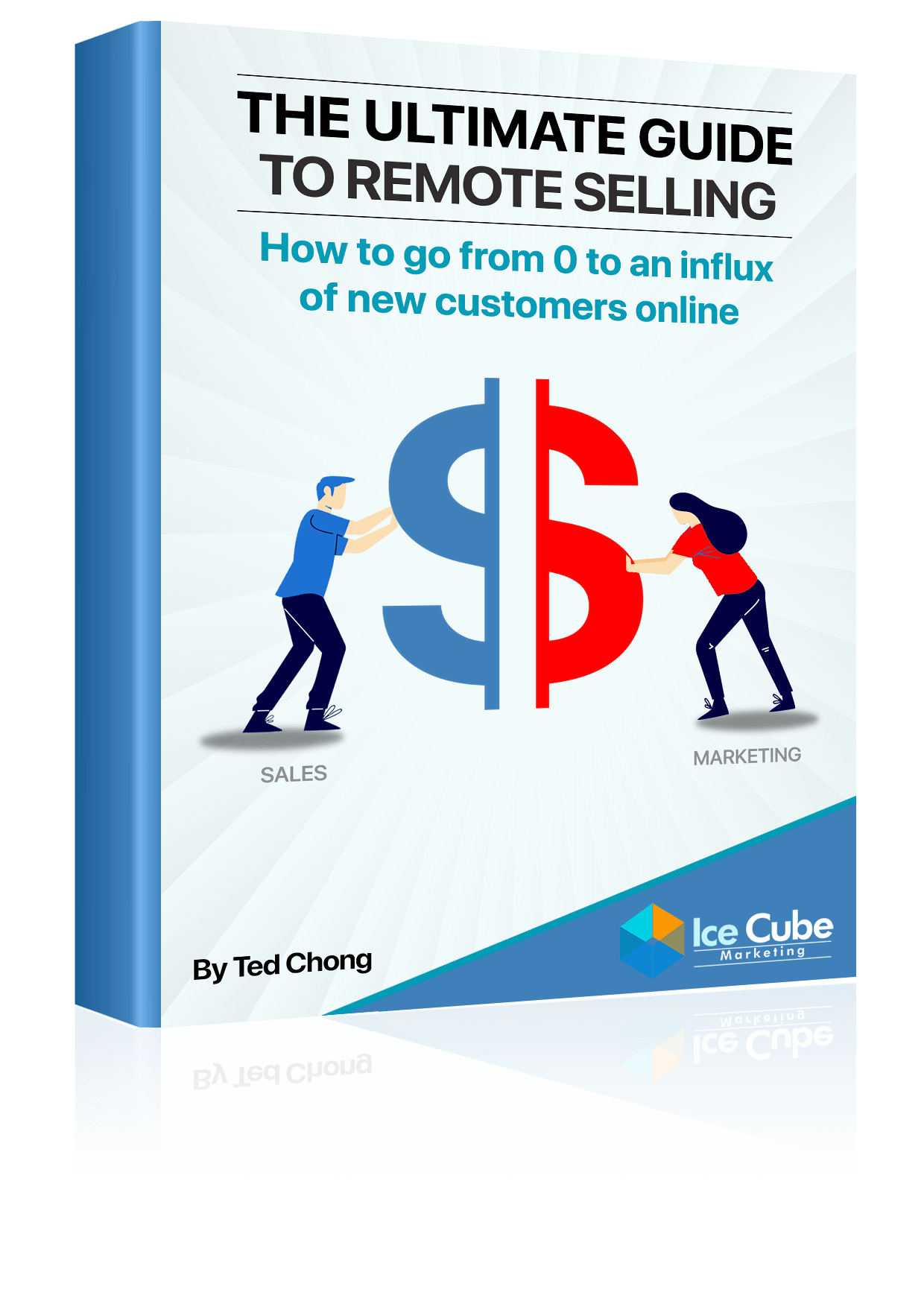
YouTube is the second-most visited website (on a monthly basis) in the world, with 1.9 billion monthly active users. In Singapore, YouTube comes in as the most popular social media platform ahead of Facebook and WhatsApp, at 88.7% penetration rate!
That’s why YouTube is far more than just a video-sharing platform – it’s one of the most important advertising platforms for marketers.However, reaching large audiences is never cheap. So, how much will it cost for your business to launch a YouTube ad campaign? Let’s explore.
Cost-Per-View for YouTube Ads
Cost-per-view or CPV is a critical metric in YouTube advertising. It’s calculated by dividing the total cost of the YouTube ad by the number of views the ad generates. According to YouTube –
- A “view” is registered when a user watches 30 seconds (or more) of the video ad.
- If the ad’s duration is shorter than 30 seconds, the user must watch it completely for it to be registered as a “view.”
- If users interact with the ad mid-way (e.g., click on the website link in the ad) – it’s also considered as a view.
Marketers must know how YouTube defines “views” because no view means no pay. If a user skips your ad after 10 seconds, you don’t pay YouTube for that interaction.
Thanks to this rule, YouTube advertisers get guaranteed exposure.If their ads don’t get considerable exposure (e.g., too many viewers skip their ads) – they don’t have to overpay on the campaign.
So, what are the Costs?
The average CPV of YouTube Ads is between $0.03 to $0.05. That means for every time your ad is viewed by a user in Singapore, an average amount of S$0.04 gets added to your overall campaign costs.
If your ads’ average costs per view are higher than S$0.04, the performance of your ads is not up to the mark. You should improve your ad campaign’s creative aspects and perform more strategic targeting. But, are YouTube ads worth the investment for local businesses?
Are YouTube Ads Worth the Money?
According to YouTube, 70% of its viewers claim that ads on the platform inform them about new products/brands. These YouTube viewers also say they’re four times more inclined to research brands, products, or services they see on YouTube ads. These viewers/consumers are also twice as likely to purchase products/services after seeing them on YouTube ads.As an agency, Youtube is increasingly becoming a viable lead generationsource for us. We are getting leads at a volume& cost that is on par or even better than Facebook ads in some instances!
One of the reasons Youtube ads work so well is because it is part of Google ads, which means you can leverage cross platform data. For example, you can target people who are searching for certain keywords on Google through the custom intent audience. You can even deploy Google’s smart bidding strategies such as ‘Target CPA’ to target relevant audience based on your conversion data.All these features make Youtube ads a very exciting platform for advertisers looking to get real results!
The Different Types of YouTube Ads and their Costs
Advertisers also get to select different types of ads that suit their marketing goals and budgeting restrictions. There are presently 5 different types of YouTube ads for marketers to choose from. Let’s compare these ad types to determine which ones may suit your YouTube ad marketing goals –
Display Ads: Clickable images, animations (no sound) that pop up on the right side of the featured videos. These ads are only shown to desktop users. Display ads can run for 30 seconds maximum. Marketers can create and upload display ads in the following formats – JPG, PNG, HTML5, or GIF (file size must be less than 150kb).
Although display ads are only shown to desktop users, the featured spot of these ads is very good. Users will see your display ads posted directly above the “suggested videos” section.
Average Cost Per Click:
Skippable Video Ads: These ads play at the start, in the middle, or at the end of YouTube videos. As the name suggests, they’re “skippable.” Users can skip these ads from anywhere between 5 seconds to 6 minutes into the video. Marketers need to upload these ads in MP4 format. The ads must have a 720p resolution or higher.
Skippable video ads appear on all devices – desktops, mobile phones, smart TVs, and pretty much any device that’s used to watch YouTube videos. The main challenge marketers have with skippable video ads is getting the audiences interested enough not to skip the ad.
Thankfully, if viewers don’t make it past the first 10 seconds of your ad, no “view” is registered. Your CPV doesn’t increase. The max length for skippable video ads in Singapore is up to 6 minutes.
Average Cost Per Thousand Views: $10-$30 (S$14 – S$40 per thousand views)
Non-Skippable Video Ads: YouTube users need to view non-skippable video ads to continue to their main videos. Just like skippable ads, non-skippable ads can appear at any point in the video. The file size and video quality specifications are also the same.
However, in Singapore, the “non-skippable” portion of your ads can’t be longer than 15 seconds. That means after 15 seconds, users are allowed to skip the ad. So, marketers must get their points across within 15 seconds to get the viewers’ full attention. However, with non-skippable video ads, some degree of exposure is guaranteed for brands.
If marketers can optimize YouTube’s targeting features, they can get guaranteed 15-second (or less) views from users who fit the profile of their target audiences. Non-skippable video ads also appear on all devices – desktops, mobile phones, smart TVs, etc.
Average Cost Per Thousand Views: $20 (S$ 27 approximately)
Bumper Ads: The maximum length for bumper ads in Singapore is up to 6 seconds. These are also non-skippable video ads that can be viewed on all devices. Bumper ads are short but effective.
According to a Google study, bumper ad campaigns gave brands a 61% increase in brand awareness. Bumper ad files can be as big as 1GB, so marketers can include heavy design elements in these ads.
YouTube Bumper ads are charged each time they receive 1000+ impressions. You only pay if your bumper ad receives 1000+ impressions/
Average Cost Per Thousand Views: $1-$4 (S$1.3 – S$5.5)

Factors that Impact YouTube Ad Costs – How Much Budget Should You Allocate?
The cost of YouTube ad campaigns depends onmany factors. They include –
- The Ad Type.Display ads cost less than skippable or TrueView in-stream ads. In general, YouTube charges more for longer ads that guarantee better exposure.
- Your Bids and Bidding Selections. If you opt for Cost Per Click (CPC) bidding, you’ll pay every time a user clicks on your ads. With Cost Per View (CPV) bidding, you’ll pay only if viewers watch your ads for 30 seconds or interact with the ad. You’ll never pay more than your maximum bids. For instance, let’s say your maximum CPC bid is $1. Your direct competitor is paying $0.50 for each click. In this case, you won’t be charged over $0.51 per click.
- Your Targets. If the audiences you’re targeting are “popular,” you’ll end up paying more for each view or click. For example, many creators target young women who are interested in cosmetics. The competitors targeting this niche will drive their bids higher. But again, you won’t have to pay more than your maximum CPV or CPC bid.
The less specific your target niche, the more competitive bidders you will find.The best way to ensure each CPV counts is by adding interactive elements to your YouTube ads. Include calls to action (CTAs), links to your business website, etc., on your in-stream video ads. By doing so, your ads will generate real engagement with interested audiences.
There’s no minimum spend limit for YouTube ads. Marketers should start with small daily budgets (S$20 – S$100) and start bidding. Edit your budget as per the results of your ad campaigns.
How to Get Maximum Results from YouTube Ads?
Leverage Facebook ads
If you are advertising on Facebook ads already, consider repurposing your best ad angles into videos. If your audience responds well to a particular message on Facebook, chances are that they will do the same on Youtube. There is one caveat, your video needs to include the context. This is the biggest difference between Youtube and Facebook video ads. Facebook allows you to add text to provide context to the video whereas Youtube videos need to provide the full context. Hence your videos ads are typically longer on Youtube.
Production Value
High video production quality is vital for achieving success on YouTube. In the past, small-time creators could build connections with their audiences, irrespective of video quality. But now the devices viewers are using to access YouTube are becoming more high-tech. If your YouTube video isn’t displayed properly on a big HDTV screen, it won’t attract the most number of viewers. The higher the quality of your video production, the more engaged viewers will be with your video. This drives up conversion and revenue.
YouTube offers marketers the chance to create and present ads to relevant audiences. If you’re looking for another source of leads, maximizing the rate of return on your ad spending is very easy on YouTube. Use this guide to understand how YouTube ad analytics works. Keep measuring and tracking your ad performances to get the best results.













3 Responses
Great article about marketing and the different facets that businesses need to know.
Neu Entity is a Brand Development agency, looks like we are a cross between creative and web development in this instance.
– Haidar
Hi Ted Chong,
Thank you for the article. Can I check if “Average Cost Per Thousand Views” also referring to CPM? If not, do you have the average CPM for different Youtube ad formats?
Thank you
Hi Jolene, thanks for your question. No it is not the same as CPM. CPM is applicable to ads impressions which differs from video views. We aren’t able to get hold of such stats in Singapore.